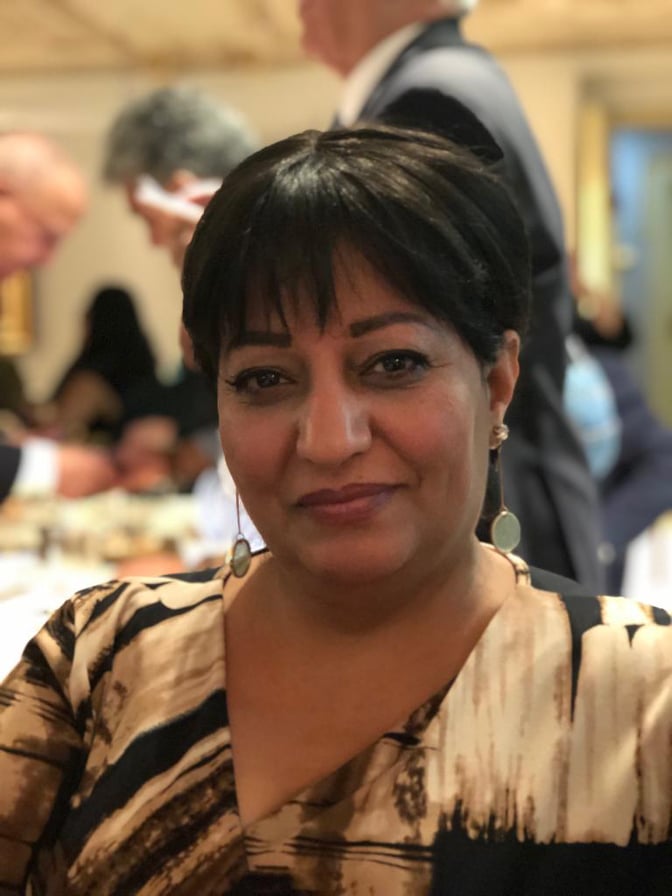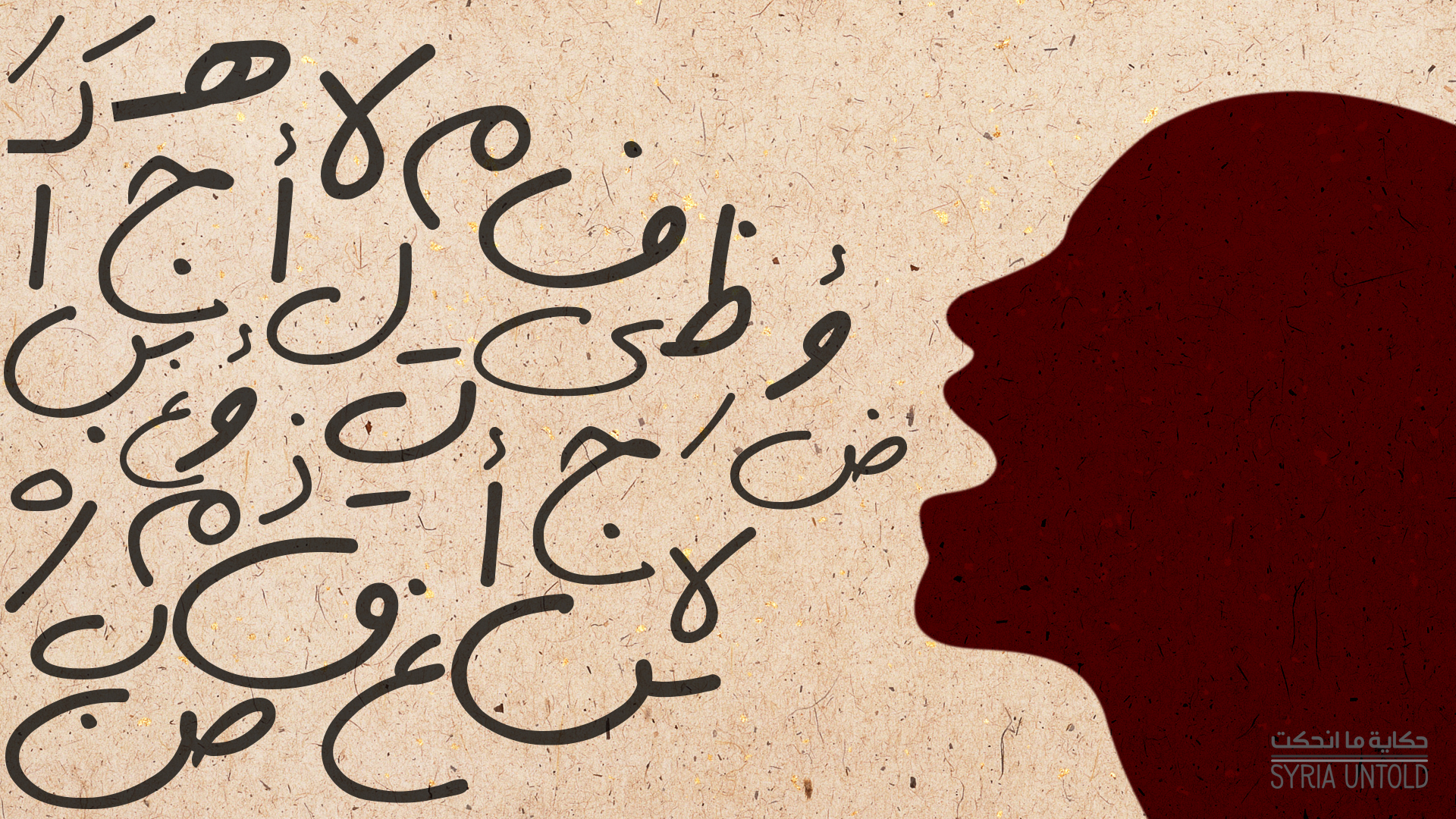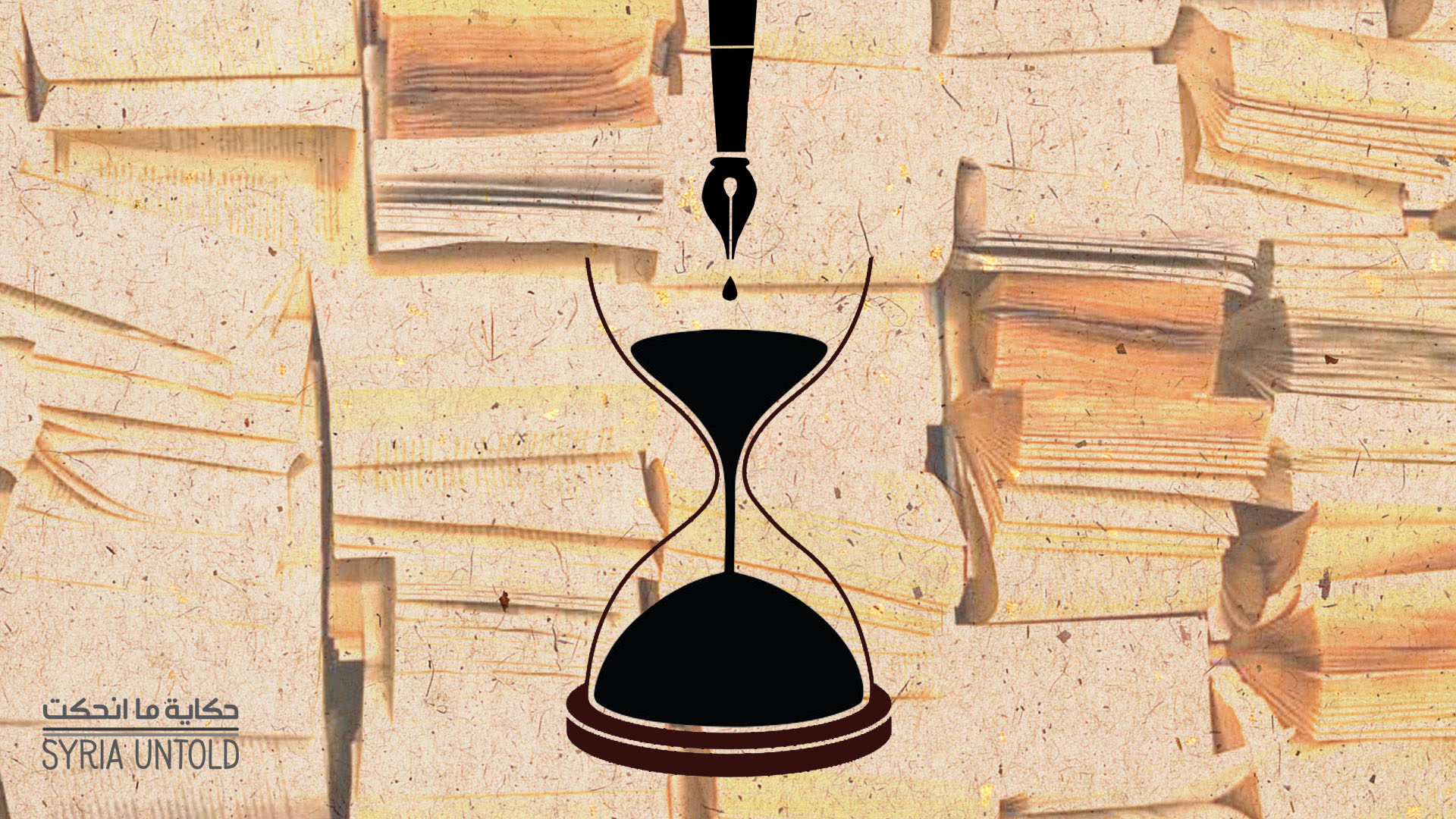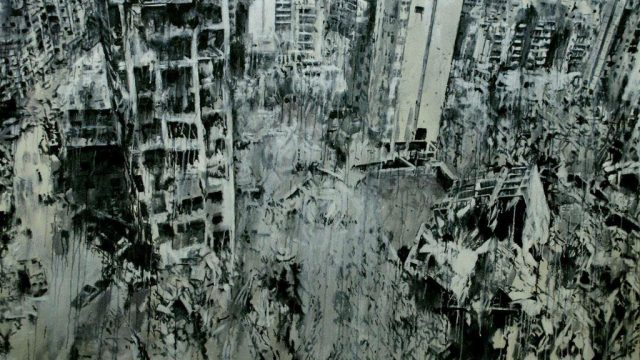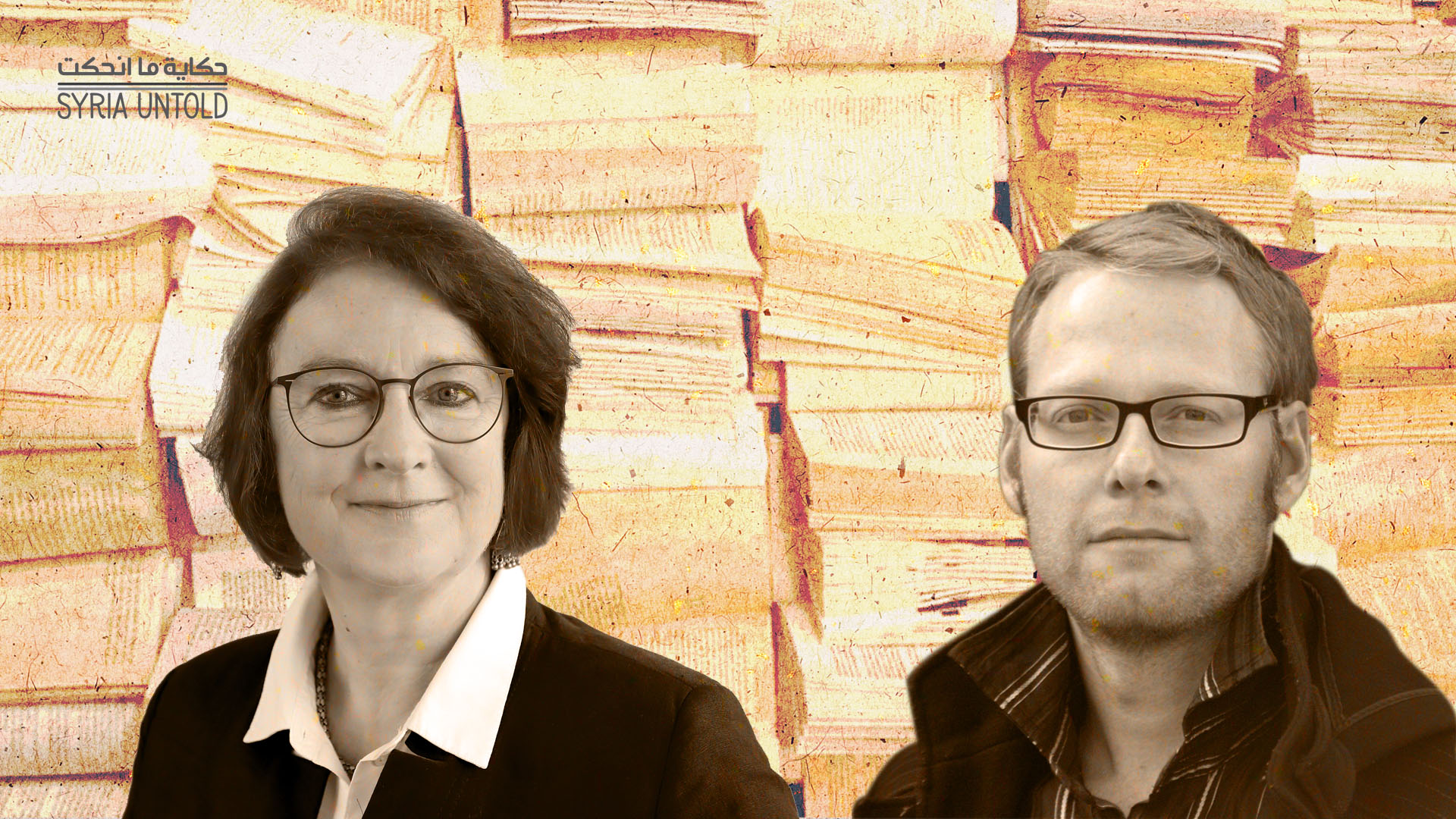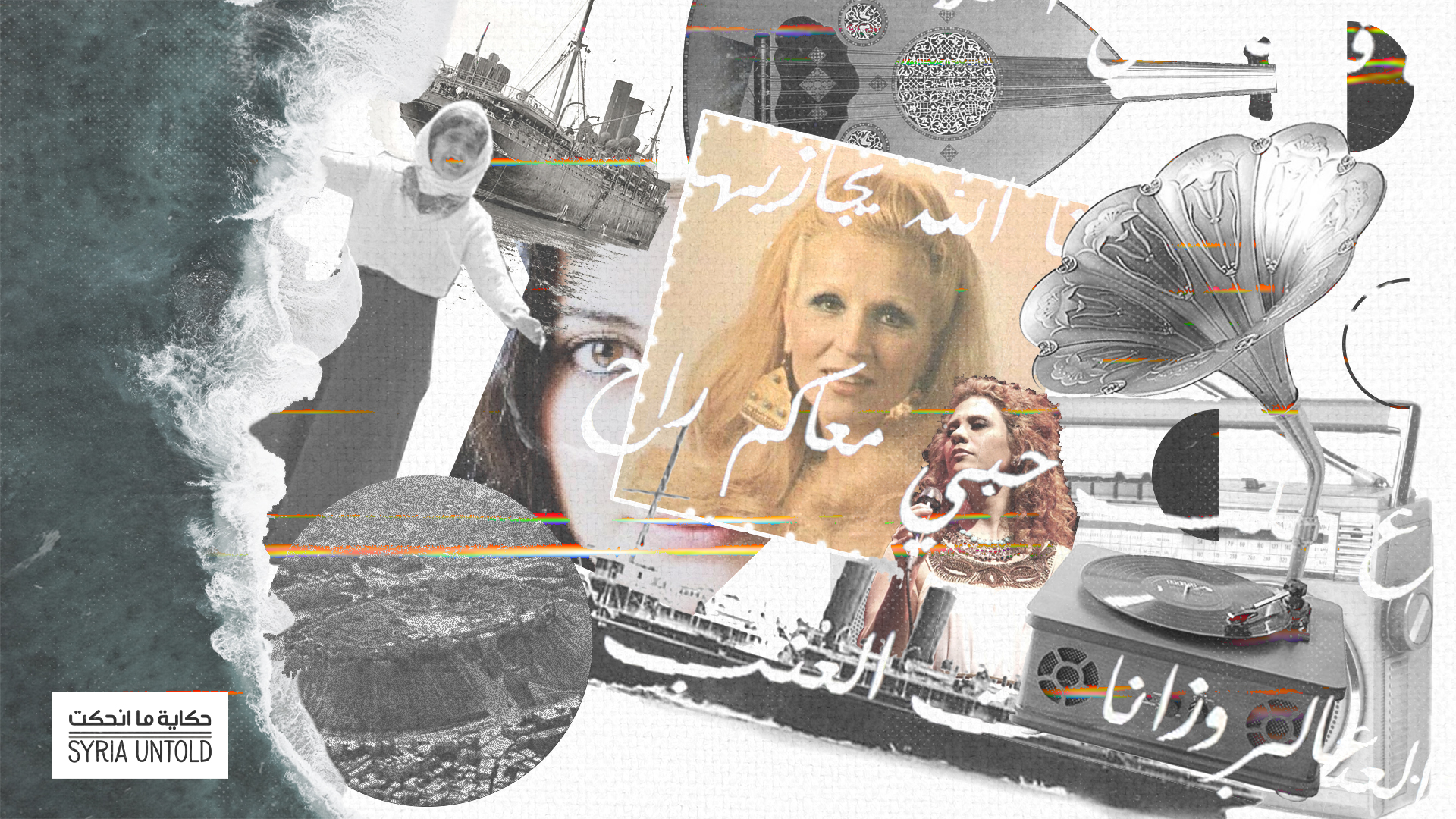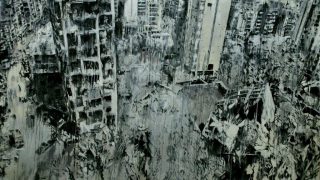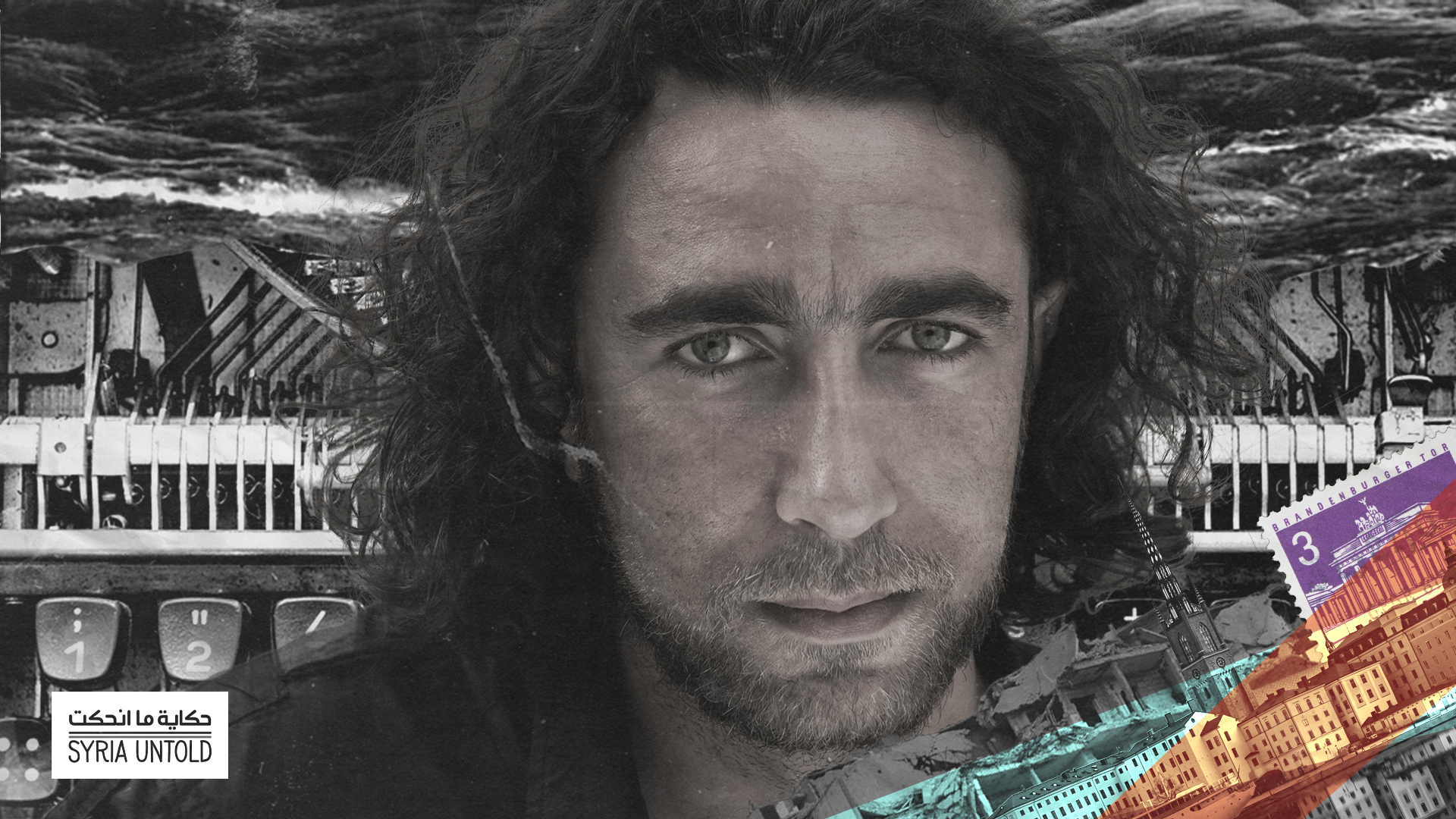Read this essay in Arabic here. This piece is part of a limited series on shifting narratives in Syrian literature, guest edited by novelist Rosa Yassin Hassan.
Hungarian philosopher György Lukács wrote that “the novel is the necessary epic form of our time.” What if events in Syria constituted a series of successive, ongoing epics of courage and, at the same time, constantly unfolding epics of death, bitterness and human suffering?
This essay will examine the relationship between the Syrian narrative and the tumultuous political situation in the country between 2000 and 2020, in an attempt to understand the dialectics of this relationship and its points of strength through a quick reading of the narrative product. It is worth noting that the novel is the literary genre that is most capable of analyzing and processing political events, then recreating them through different perspectives of those same events.
The study of the Syrian novel during this period can be divided into two parts. The first is comprised of the novels published between 2000 and 2010. For 40 years under the rule of the Assads, the only sources of news in Syria were the state-run SANA agency, established in 1965, and three daily newspapers controlled by the regime. After Bashar al-Assad rose to power, some satirical newspapers and other private, non-satirical ones emerged. However, Syrian security forces shut down most of them, and several private newspapers affiliated with the regime were established, in addition to the Addounia TV channel, owned partly by Assad crony Mohammed Hamsho. The novels of that era are considered important, as they flourished under a near absolute media blackout and were the key sources documenting the truth of what was happening in the country. Researcher Kate Michel has written that the novel “unveiled a new meaning and discovery of the past events by tackling records lost in history.”
On lust for the Syrian narrative
02 February 2021
Syria’s year of pain, through the eyes (and pen) of Khaled Khalifa
21 November 2020
The Syrian narrative published during that time period constitutes a lost record of Syrian history. This narrative delved into the internal structure of society and its intertwining relations, trying to interpret and change reality.
French philosopher and critic Jacques Rancière wrote that “political novels are powerful, and readers devour them.” Syrian prison literature novels in particular gained momentum when they exposed the unprecedented extent of political and intellectual oppression of any opinion opposing Assad’s regime, regardless of whether those opinions were held by politicians, artists, writers or regular people.
Prison literature and tackling political taboos
Syrian prison narratives have proliferated and now number more than 200 novels. Seeing this growth, Syrian poet and former prisoner Faraj Bayrakdar wrote: “The future will name Syrian writers as the largest global legacy in prison literature!” These narratives have tackled issues such as physical torture and unbearable emotional humiliation.
Mustafa Khalifa’s 2008 novel The Shell might be the best representation of the narratives of prison literature, as it depicted the shocking and horrendous reality without any retouches and used a clever plot: the protagonist is a Christian who enters Tadmur Prison on charges of joining the Muslim Brotherhood. Other prison novels include Rosa Yassin Hassan’s Negative from the Memories of Female Prisoners; Nabil Sleiman’s The Prison; Malek Daghestani’s The Freedom Circle; May Hafez’s Keep Your Eye on the Boat; and Ayman Otoum’s They Hear Her Whispering, among others.
Other novels written during the same period tackled the psychological states of both political prisoners and the people they left behind: The Missing by Louay al-Hussein, which explores the deepening inner void of the prisoner inside political prisons, turning him into a ghost incapable of loving. The General’s Coffee by Ghassan Jabai is another example. The Guardians of the Air by Rosa Yassin Hassan examines the suffering of political prisoners’ lovers and forsaken wives, as well as the role of minorities in Syrian society.
Future narratives will be ones of Syrian exile.
In addition to the theme of political imprisonment, novels published during that period addressed the atrocity of the 1982 Hama massacre and its ripple effects on Syrian society. This was an attempt to delve into the role of the Assad regime’s violence and the exploitation of some extremist Islamist leaders. Khaled Khalifa’s In Praise of Hatred and No Knives in the Kitchens of This City are among the examples demonstrating the degree of female persecution in conservative Muslim society and the disturbing resonance of the Hama and Tadmur Prison massacres. Many Syrians themselves became murderers complicit in the massacres, while others became radical Islamists waiting for the right moment to retaliate. The majority were just terrorized and powerless.
Some novels highlighted the level of economic and moral corruption of the sectarian officers of the Assad regime, like Samar Yazbek’s Salsal and Jamil Shkeir’s Rowing in the Mud. These novels tried to tackle contemporary Syria from multiple perspectives, to guide society into safe waters amid its stormy struggle.
A new phase and new narratives
After the outbreak of the 2011 Syrian revolution, the novel took on some new characteristics imposed by intense sociopolitical changes. Novels tackled the following themes:
- The Syrian revolution and its dimensions:
Novelists tried to guard the memory of the peaceful revolution and to be loyal in relaying its outbreak. Samar Yazbek’s A Woman in the Crossfire was the first book that documented the degree of unprecedented violence that Assad used against the revolution and the extent of social solidarity among protesters from all sects. Rosa Yassin Hassan’s novel Touched by Magic documented the beginning of the revolution and the regime’s massacres against the protest movement. Yassin al-Haj Saleh’s Salvation O Boys tackled the same theme. It is worth noting that many novels that were published later on also addressed these issues: Dima Wannous’ The Frightened Ones, Nabil Suleiman’s Night Traveling, Khaled Khalifa’s Death is Hard Work, Khalil Sweileh’s Remorse Test and Abdullah Maksour’s Days in Baba Amr.
Arts, reality and the test of time
09 February 2021
Raqqa, at the center of the universe
16 August 2020
- Sectarian divisions and intellectual alignments bred by the Syrian revolution in Syrian society:
Samar Yazbek was the first author who referred to this theme, in A Woman in the Crossfire. An Alawite, many people from her community accused her of betrayal and expelled her and her family from the Syrian coast. A security officer excessively hit and humiliated her in detention; the Assad regime has tried by all means to pressure the people of its own Alawite sect to remain loyal.
The division became clear in Rosa Yassin Hassan’s Touched by Magic, which depicted the extent of sectarian mobilization sought by the regime. In The Frightened Ones, Dima Wannous focused on that aspect specifically, and on the violent reaction of her own family to her stance against the regime, in addition to the vertical and horizontal divisions in Syrian society. Fawaz Haddad’s The Enemy Syrians reconnected the present with the past and exposed the sectarian divides that Assad’s regime tried to entrench, since the days of Hafez ordering the massacres at Hama and Tadmur.
- Jihadist and Salafist groups in Syria, Islamic State presence and analysis of the reasons and repercussions of this presence:
Syrian novelists have tried to reflect the levels of despair that Syrians reached amid all the dead, detainees, disfigured and others still buried under the rubble after being disappointed by the world's inaction.
These narratives tackled the willingness of many of the revolution’s youth to join armed groups under any name or slogan, and indicated the factors behind both the emergence of Islamist factions and their sponsorship by Gulf countries and other regional states. They also explored the role of the regime in creating such groups after releasing their leaders from its prisons, as well as these leaders’ exploitation of the conservative religious environments of rural Aleppo, Hama and Damascus. These narratives reopened the wounds of the Hama and Tadmur massacres of the 1980s and tackled the resurgence of the Muslim Brotherhood’s activities and attempts to take over the revolution.
Novels such as The Blue Pen, Touched by Magic, Days in Baba Amr and Death is Hard Work addressed this theme, while Night Traveling discussed the stages of the Islamic State’s creation and its seizure of Raqqa.
Syrian novelists have tried to reflect the levels of despair that Syrians reached amid all the dead, detainees, disfigured and others still buried under the rubble after being disappointed by the world's inaction.
- Complications of the war, its catastrophic effect and the tragedy of displacement and asylum:
More recently published novels have tackled this theme. They were preoccupied with relaying the extent of catastrophic devastation that afflicted Syrian society after all these years of war. They also narrated the scale of human tragedies and the plight of internal and external displacement, exposing the corruption of the majority of armed factions and the extremism of their slogans.
For instance, in Jan Dost’s A Green Bus Leaves Aleppo, all the events that happened in the wake of the peaceful phase of the revolution were an unbelievable humanitarian disaster, and despite the main cause being the regime’s extreme violence—and the intervention of its “ideological” army to kill opponents and shell cities—everybody is to blame in that war. Other works on this theme include Khaled Khalifa’s Death is Hard Work; Shahla Ujayli’s Summer with the Enemy and Khalil Sweileh’s Remorse Test.
This quick overview of the Syrian narrative product in the past 20 years allows us to reach the following conclusions:
What did exile change in our narratives?
26 January 2021
A famine, a ship and a folk song that spanned borders
18 December 2020
- Novels have tracked the deterioration of Syrian society step by step through unveiling pieces of events, analyzing their causes and exploring the outcomes. They documented the authority of oppression and terror, which has constituted the foundation of the Syrian regime. These narratives repeated intentional meanings summarized by the corruption of state authority and the need for a revolution throughout the narrative discourse, which paved the way for the state of revolution.
- Novels generally took interest in the ideologies of Syrian society and their diversity, and sought to transform social concepts into ideologies espoused by some people, without a trace of any of their other beliefs.
- These novels traced the growing ideology of the Muslim Brotherhood in Syria after the 1967 defeat and its extremism in the 1980s. They analyzed the causes that led to this extremism and its outcomes in Syrian society. They also traced the formation of Islamist groups after the revolution and the sectarian manipulation that regional states and the Syrian regime practiced, as well as the disastrous change resulting from the presence of the Islamic State in Syrian society.
- Pivotal events like the Hama and Tadmur Prison massacres were present in most novels both before and after the revolution. Fear was the main driver of the distressed fictional characters, regardless of the cultural orientation of the novelist. The revolution remained a present theme in these post-revolution narratives. Due to the war, novels published after 2012 were dark. Their heroes died, and the lives of the characters were destroyed.
- Syrian novels also tackled the magnitude of social changes that the revolution brought about and showed the increasing solidarity of the people, on the one hand, and sharp horizontal and vertical division in all the classes of Syrian society.
- Novels published after the revolution played a major role in recording reality through a perspective that was aimed at being comprehensive, and through documenting the beginnings of the peaceful revolution. However, these novels couldn’t play a real role in the developments of the unfathomable political events that happened on the ground.
- Syrian female novelists were remarkably present in giving a female touch to Syrian narratives. Syrian minority writers were also largely present in this scene, proving that the conflict was not sectarian.
- Syrian authorities banned most novels published in the past 20 years. The mere ownership of some of these books was considered a crime worthy of arrest, demonstrating the rivalry between the authority and the novel. Many novelists who are still in Syria are afraid of publishing their novels, and they have opted for silence instead. This explains why the most popular novels are by writers living outside Syria. Future narratives will be ones of Syrian exile.
- The war in Syria produced a homogeneous narrative text, which blended documentation with imagination and fiction. Most Syrian novelists were perhaps forced during this period to write war novels, as though they were writing a biography of destruction, fear and murder.
- All Syrian novels tackling the revolution and war share one single trait, which is their unresolved or incomplete endings and scenes. Perhaps this is their truest trait because many details of the Syrian crisis are still missing, and the end is unknown.
- The ideas in this essay still need plenty of research and studies. A limited study like this one cannot possibly be complete. Besides, the events mentioned here are still fresh, and researchers need time to process and analyze them in greater, more comprehensive depth and impartiality.


